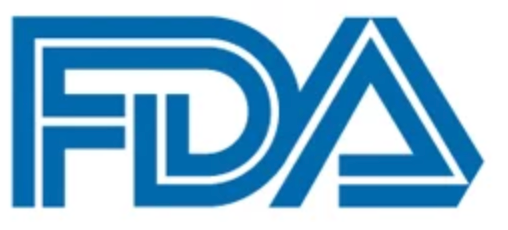FDA Grants Priority Review to Loncastuximab Tesirine for Relapsed/Refractory DLBCL
November 20, 2020 - The FDA has granted a priority review designation to a biologics license application for loncastuximab tesirine for the treatment of patients with relapsed or refractory diffuse large B-cell lymphoma.

November 20, 2020 - The FDA has granted a priority review designation to a biologics license application (BLA) for loncastuximab tesirine (Lonca) for the treatment of patients with relapsed or refractory diffuse large B-cell lymphoma (DLBCL), according to an announcement from ADC Therapeutics.1
The application is based on data from the pivotal phase 2 LOTIS 2 trial, where the antibody-drug conjugate induced an overall response rate (ORR) of 48.3% and a complete response (CR) rate of 24.1% in patients with relapsed/refractory disease who had received 2 or more previous lines of systemic treatment.2
Under the Prescription Drug User Fee Act, the FDA must make a decision on the BLA by May 21, 2021.
“The FDA’s acceptance of our BLA and grating of priority review for [loncastuximab tesirine] is a tremendous accomplishment that brings ADC Therapeutics one step closer to being able to offer patients with relapsed or refractory DLBCL a greatly needed new treatment option in 2021,” Chris Martin, chief executive officer of ADC Therapeutics, stated in a press release. “We look forward to working with the FDA during its review of our BLA submission [loncastuximab tesirine]. Our organization remains focused on robust planning for a successful launch next year.”
In the multicenter, open-label, single arm phase 2 trial, investigators evaluated the safety and efficacy of loncastuximab tesirine in patients with relapsed/refractory DLBCL who had received 2 or more previous lines of systemic therapy. Participants on the trial had received a median of 3 prior lines of treatment.
Participants received a 30-minute infusion of the ADC at a dose of 150 μg/kg once every 3 weeks for the first 2 treatment cycles. For subsequent cycles, patients were given the agent at a dose of 75 μg/kg. Patients continued to receive treatment until disease progression, unacceptable toxicity, or when other discontinuation criteria were met. Therapy was given for 1 year.
At the April 6, 2020 data cutoff, 145 participants were enrolled to the trial; these patients had received a mean of 4.3 cycles of the ADC (range, 1-15). Additional data revealed during the 2020 European Hematology Association (EHA) Congress showed that loncastuximab tesirine induced an ORR of 37.9% in patients who were refractory to their frontline treatment; this rate was 36.9% in patients who were refractory to their last-line previous treatment. The median duration response achieved with the ADC was 10.25 months.
Regarding safety, loncastuximab tesirine was found to be tolerable and no new safety signals had been observed. The most common grade 3 or higher treatment-emergent adverse effects reported with the ADC in 10% or more patients comprised neutropenia (25.5%) with low incidence of febrile neutropenia (3.4%), thrombocytopenia (17.9%), increased gamma-glutamyl transferase (16.6%), and anemia (10.3%).
Data from a subgroup analysis of the trial will be revealed in a poster presentation during the 2020 ASH Annual Meeting, according to ADC Therapeutics.
Loncastuximab tesirine is also under examination in combination with ibrutinib (Imbruvica) in patients with relapsed/refractory DLBCL or mantle cell lymphoma (MCL). In the phase 1/2 trial, the ADC was administered in 30-minute IV infusions as part of a standard 3+3 dose-escalation trial design. Patients received doses of 60 μg/kg or 90 μg/kg. Loncastuximab tesirine was given every 3 weeks for the first 2 doses, with concurrent fixed-dose oral ibrutinib given at 560 mg/day for up to 1 year.
At the April 6, 2020 data cutoff of, a total of 25 participants had been enrolled to the trial; 23 of these patients had DLBCL, while 2 patients had MCL. Eighteen patients were evaluable for antitumor activity. Interim data from the phase 1 portion of the research, which were also presented during the 2020 EHA Congress, demonstrated that the combination elicited an ORR of 66.7% with a CR rate of 50.0% across the dose levels. Moreover, at the recommended phase 2 dose of 60 μg/kg, the combination induced an ORR of 75.0% with a 58.3% CR rate.
The phase 3 confirmatory LOTIS 5 trial (NCT04384484), has also commenced. In this trial, investigators will assess the combination of loncastuximab tesirine plus rituximab (Rituxan) compared with chemoimmunotherapy in patients with relapsed/refractory DLBCL.3 Results from this trial are intended to provide support for a supplemental BLA for the ADC for use in the second-line treatment of patients with relapsed/refractory DLBCL.
References
- ADC Therapeutics announces FDA accepts biologics license application and grants priority review for loncastuximab tesirine for treatment of relapsed or refractory diffuse large B-cell lymphoma. News release. November 20, 2020. Access November 20, 2020.https://bit.ly/3fpJMN6.
- ADC Therapeutics announces maturing data from pivotal phase 2 clinical trial and phase 1/2 combination clinical trial of loncastuximab tesirine (Lonca) in patients with relapsed or refractory diffuse large B-cell lymphoma. News release. ADC Therapeutics SA. June 12, 2020. Accessed November 20, 2020. https://bwnews.pr/33Q1mnX.
- Study to evaluate loncastuximab tesirine with rituximab versus immunochemotherapy in participants with relapsed or refractory diffuse large B-cell lymphoma. Clinicaltrials.gov. Updated September 17, 2020. Accessed November 20, 2020. https://clinicaltrials.gov/ct2/show/NCT04384484.



